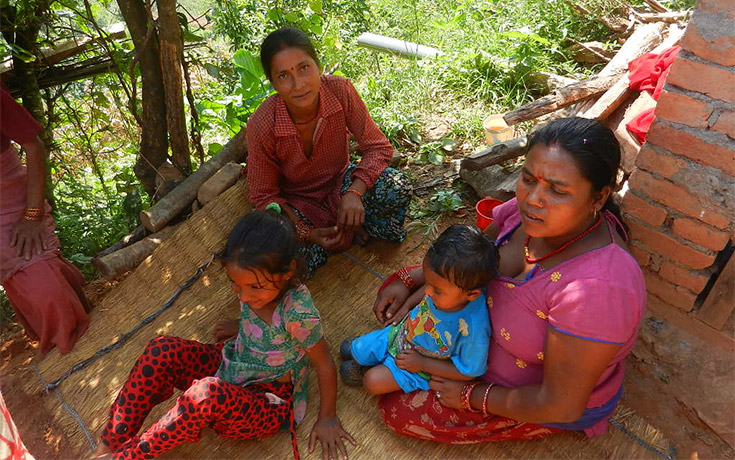The poor struggle in post-earthquake Nepal
Luavut Zahid is on assignment in Nepal; here, she reports on how the poorer citizens of Nepal are struggling to get back on their feet after the earthquake earlier this year.
“When the earthquake happened our world was turned upside down. There are cracks in the walls of my home now and my family is afraid to step foot inside,” says Sarita Pareyar, a Dalit woman from Bas Pokhari Village, Nepal.

As a Dalit, Sarita is part of a community worst hit by natural calamities and climate change. Nepal has a caste system in place where it places the Brahmins at the top and Dalits at the bottom. Under the caste system the Dalit are the ‘untouchables’ who are stuck in the most backward political, economic, social, educational and religious fields. Over 13.2 per cent of Nepal’s population consists of Dalits.
The 7.8 and 7.3 magnitude quakes that left Nepal rattled on April 25 and May 12, respectively, indiscriminately killed over 9,000 people. The relief efforts that soon followed suit also distributed aid evenly. However, in the aftermath it was clear that some communities were having a harder time getting back on their feet.
Sarita’s husband has already moved to Kathmandu to earn a better living for his family, leaving her behind with their three children and his parents. Resources are thin and every penny counts.
“After the earthquake we got Rs. 15,000 (approx USD 140) from the government, some corrugated tins and two bags of rice,” she recalls. The supplies did not last long, and the money offered by the government was used up completely to setup a makeup shelter for her and her family – too small to cram them all in, yet somehow they continue to manage.
The family has little land, and that too has become a handful to manage because of climate change. “We own only six Ropani (0.75 acres) of land and it is not even sufficient to feed my family – I can’t even think of selling its produce,” she laments.
“The rain doesn’t come when it should anymore and when it does rain there is little water. We lose half the crop we are trying to grow because of it,” she adds.
Sarita isn’t the only one having trouble cultivating her land, the Brahmins she works for are feeling the troubling impact of climate change.
“I get paid around Rs 200 (approx. USD 1.9) for working from 11:00hrs to 19:00hrs. Much of the crop on those lands also goes to waste,” she said. This degradation is not just because of irrigation problems but also owing to use of harmful pesticides and chemical fertilisers.

If the farms that Sarita works on don’t produce as much as it used to it means that the number of days she’s required to work also goes down, effectively reducing her overall income despite there being no change in her wage rates.
The Office of the District Development Committee looks into development issues being faced by Nepalis. Programme Officer Rishi Kanta Ghimire agreed that the Dalits are marginalized and often live below the line of poverty.
“We have developed a special budget for them because they are at risk due to the earthquake and climate change; it is 10 per cent of the total development budget,” he told me.
However, what Ghimire wants to ensure is that the community becomes self-reliant. “It’s not about handing out subsidies,” he says.
All hope isn’t lost?
Centre for Environmental and Agricultural Policy Research, Extension and Development (CEAPRED) is an organisation that focuses on human centered sustainable development. It has recently undertaken pilot projects to teach mountain communities recovering from the earthquake how to add climate smart practices to their farms.
CEAPRED Programme Director Keshab Datta Joshi says that Dalits need a combination of short and long-term interventions: “Some issues can be addressed through short term intervention but with longer term effect. Agricultural training is an example where you impart short term training but they use it in the longer term.”
Under the programme Sarita could learn water, cropping, and energy smart practices and hopefully in the process become more self-reliant.
“With water smart practices they can learn to work with plastic ponds for irrigation, waste water collection ponds, drip irrigation and Mulching – all of which reduce the required amount of water,” Joshi says.
With crop smart practices, Sarita can learn how to produce and apply organic pesticides and fertiliser at very low cost. “Our pilot studies have shown that these practices help keep costs down and keep production up. For people like the Dalits who are resource poor, less literate and have less access to information, these practices present a unique opportunity,” he tells me.
Luavut Zahid, 03/10/2015